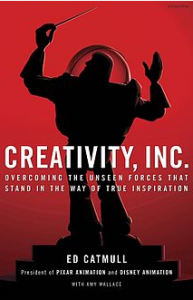This is the second blog in the series looking at how to build and support effective local creative clusters. In particular, how to help micro-companies or freelancers succeed in your area. Having identified the number, type and range of creative enterprises in an area, based on the initial research, there are some key questions which need to be addressed on developing creative clusters.
- Diversity – how to manage the fragmented, and diverse, creative activities within your area?
- Development – what skills and resources are needed to improve the opportunities for growth within your area?
- Inclusivity – how to engage communities, cultures and individuals who are currently excluded or under-represented within the cluster?
- Quality – how to ensure the quality of new work is high enough to compete in a global market place?
- Relevance – how to match support to individual enterprises in ways that are effective and relevant to their development?
This blog sets out some of the main points to be borne in mind when answering these questions, and highlights the successful approaches already adopted in some creative cluster projects. In so doing the aim is to help creatives, Universities, Local Authorities, LEPs, plus regional and national arts and media bodies to be more effective in supporting local creative clusters.

The question of diversity – how to manage the fragmented, and diverse, creative activities within your area?
It would make life so much easier if creativity really was clustered in uniform groups e.g. games in one place, visual artists in another etc., as providing support structures and engagement would be simpler. However, the reality of any area is that it will have a very fragmented and mixed creative economy. So having identified all the various creatives in your area, be it a city, town or rural district, what do you do next?
The first step is to ascertain what each of the different groups of creatives see as the major barriers to developing new work, growing and sustaining their business, and collaborating with other creative enterprises. It is worth bearing in mind at this point the findings of the AHRC’s FUSE work, where some creative enterprises were seen to benefit substantially by being linked to digital enterprises.
Once the key barriers to development have been identified the next step is to look at how these barriers may be overcome in the short, medium and long term.
The fastest way of progressing things is to bring creatives together into practice focused groups and meetings. This will help to ensure the use of limited resources are best utilised. During this process it will be possible to identify priorities, and those potential leaders who can take the strategy forward within your particular local creative area. This collaborative approach is a major step in solving the fragmented and diverse nature of demands being made on resources.
Note: many creative people like working alone, or in very small teams, so the goal in terms of developing companies, etc. may not be about increasing the size of an enterprise but more about increasing productivity and profitability.

The question of development – what skills and resources are needed to improve the opportunities for growth within your area?
Numerous reports and surveys have identified key skills shortages within the creative industries, some of which have been, and potentially will be, affected by changes in the migration and work relationships determined by UK government policy. However, at a local level it is the relationships between local colleges, universities, local authorities, and creative enterprises which are critical to meeting skills and resource issues.
Having identified key needs within the local creative economy developing a strategy using existing resources, and planning for increasing support for education, training and resource development, is critical to any potential growth in the cluster.
The danger is thinking one approach will benefit all, the classic example being the creation of large accelerator type projects by converting or building substantial ‘creative hub’ buildings. Such buildings can benefit some creative areas e.g. music with the provision of cheap studios, etc., or crafts with the provision of collective studios and potential gallery sales space. However, this type of provision does not suit all creative enterprises. For many enterprises it is much more about access to content development and production finance, or marketing, which will prove key to growth and success.
In all contexts the provision of up to date information on funding support, market news, and access to under-used resources in the area will substantially benefit all the creatives involved.
The promotion of collaborative working, and collective activity has proven to be a major growth factor in the creative industries, and should be considered in any development process and resource provision.
“If you give a good idea to a mediocre team, they will screw it up. If you give a mediocre idea to a brilliant team, they will either fix it or throw it away and come up with something better.” Ed Catmull : Pixar/ Disney

The question of inclusivity – how to engage communities, cultures and individuals, who are currently excluded or under-represented within your cluster?
There is currently a new awareness, and substantial national lobbying around the issues of inclusivity. As a result, there are numerous initiatives and programmes being undertaken in an attempt to address the obvious lack of representation within areas of creative activity.
Previous blogs have outlined ways in which organisations can improve access, and recruitment to programmes. Therefore, in this context it is perhaps only worth emphasising that many culturally specific activities may have audiences and buyers beyond not just the local area but also outside the UK. This is particularly true of narrative driven content and craft-based activities. Inclusivity is not just about the person, it is also about visions and outputs.

The question of quality – how to ensure the quality of new work is high enough to compete in a global market place?
There have been many initiatives and in some cases millions of pounds spent on developing new creative outputs only for them to fail in the relevant market. In any discussion with potential investors in the creative sectors it does not take long for the ‘risky’ nature of creative enterprises and the ‘artsy’ nature of creatives to be raised. In this context that the question of quality becomes paramount in developing a successful creative cluster.
There is not long enough in this blog to address all the myths, mis-conceptions, and degrees of ignorance, which need to be overcome in this area from all the potential partners in creative success (see 4 Phrases which limit creativity). However, one thing which can be addressed is the use of successful creative mentors in the development process. The inclusion of successful creative mentors in the designing of programmes, the supporting of new talent, and the assessing of outputs is critical, not only to credibility, but also to the actual quality of outputs.
Mentors also play a vital role in the final question to be addressed.

The question of relevance – how to match support to individual enterprises in ways that are effective and relevant to their development?
Small creative enterprise often exist in a hand-to-mouth relationship with their buyers be they individual customers, or major corporate companies. This leads to a narrow focus on obtaining and maintaining the few contracts which are essential for the business to survive. In addition, the scale of the enterprises often means they feel they are in a very weak position to bargain any serious head room on the prices they charge, thus margins are very tight. This in turn leads to little time and no resources to address new skills, new marketing, or new product development and its exploitation. It is in this context any business support has to be highly tailored and specific to the needs of creatives.
There have been numerous attempts from the AHRC, national Arts and Media bodies, Government and a number of Universities to provide such a support structure for creative entrepreneurs over the last decade.
Too often creatives have been asked to attend generic courses, been advised by people who have only a limited knowledge of the creative industries or lectured by individuals who have been successful in other areas e.g. tech or retail. Given this level of mis-match between providers and the creatives it is perhaps not surprising that many past activities have failed. As a result several people have concluded that creatives do not want business support.
This might be the case if it were not for both FUSE 2, and the CIF Freelancers’ survey, indicating that this is not the creatives’ point of view, leading to the conclusion that it is not the issue about the need/desire for business support but more how it is delivered that is the question.
Providing relevant and effective business support to micro-companies and freelancers is critical to any plan to improve the market for creative outputs and the investment climate for creatives. One project ’Prosper’, run by Creative United and funded by the Arts Council England, ran for a very short time in 2017-18, but brought to light one or two ways in which such support could be provided.
‘Prosper’, based upon various offerings of support to a diversity of arts organisations, concluded that a credit system which allowed creatives to access mentors specific to their needs at a time convenient to them was the most desired and the most used. Though this is only one piece of research it suggests that using creative sector industry mentors, combined with a flexible legal and financial support system designed for small creative enterprise will be a critical factor in developing your local creative cluster.
One final issue which needs addressing is language. It is one thing to talk about a business plan to a techie who aims to build an app and sell on its success within a short time, it is completely other to discuss with a creative how their current work may be exploited on other platforms, or in new markets. The former is focused on potential sales from the outset, the latter only focuses on potential sales after the bulk of development, or even completion, has been achieved. The processes may in fact be very similar with respect to outputs e.g. an app or a creative piece of work, but the language around them are radically different and this has to be recognised in providing any support services to creatives.
Supporting Creative Micro-companies and Freelancers
For any creative cluster to grow, and the creative sector as a whole to become sustainable, as opposed to a few individuals, or companies, becoming ‘stars’/’unicorns’ the process of identifying the needs of creative enterprises in your area is critical. It is equally important to then provide relevant and effective support and resources to meet their needs.
Once this has been achieved then creative enterprises that initially may have seemed very limited in their commercial potential, and un-investable in traditional terms, will now be seen in a new light.
